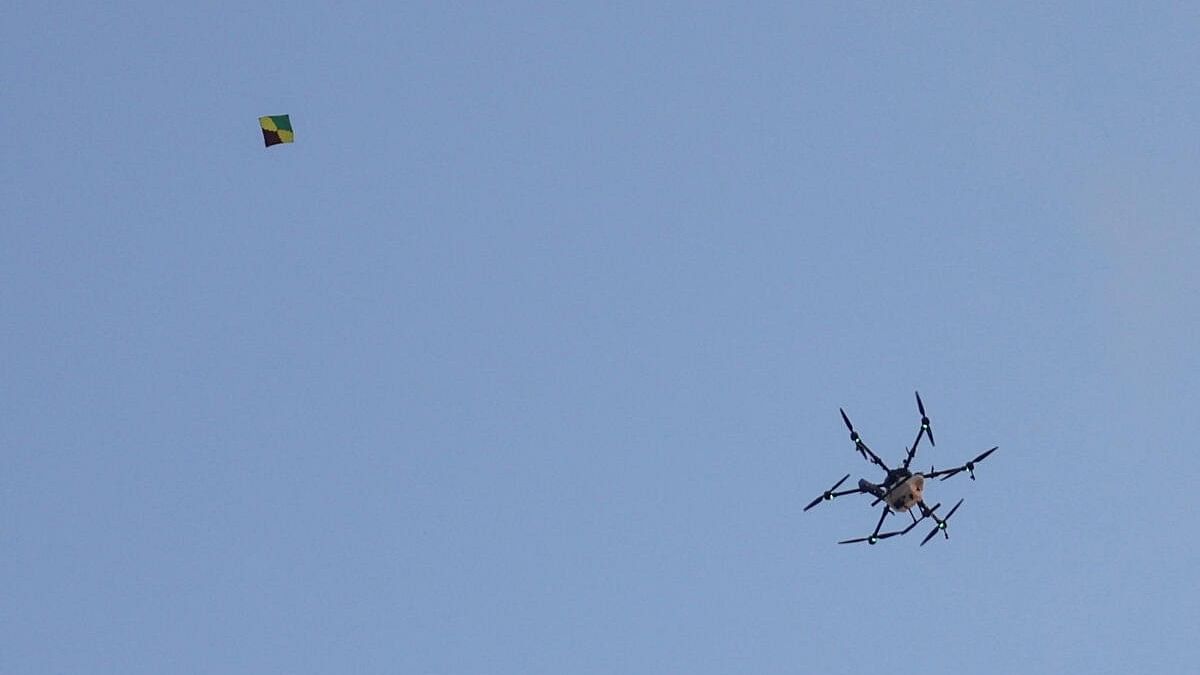
The drone deal is critical from various perspectives
Credit: Reuters photos
When Senator Ben Cardin, Chairman of the US Senate Foreign Relations Committee, temporarily blocked the $3.9-bn Predator drone sale to India and linked it with the need for a probe into the alleged plot to kill a Khalistani separatist on US soil, there were concerns that India-US ties could be souring. However, that does not appear to be the case.
On February 1, an important development signaled yet another strategic upgrade in bilateral relations. The US State Department approved the Foreign Military Sale of 31 MQ-9B SkyGuardian drones and related equipment to India, allowing the US Defense Security Cooperation Agency to formally notify the US Congress of the sale. The formal process gives the US Congress one month to review the sale, which will pave way for a Letter of Acceptance between India and the US concluding the deal.
The drone deal is critical from various perspectives. This deal closes the time loop of six years since India first evinced interest in this technology. The MQ-9B could be a technological game changer in the Indo-Pacific in terms of enhancing the Indian military’s, especially the Navy’s, Intelligence-Surveillance-Reconnaissance (ISR) capabilities. Since these drones also have a considerable long-range strike capability, their ability to establish both land and maritime deterrence should not be discounted.
Finally, as the ongoing conflicts in West Asia have marked a return of attacks at sea, the MQ-9B’s acquisition couldn’t be timelier. The drone’s ability to fly continuously for more than 30 hours, with a top speed exceeding 400 km/hr and a payload capacity of 1,700 kg, including 450-kg bombs and four missiles, means that with its lethal punch, it extends the Indian Navy’s deterrence arc well into the Arabian
Sea in the West and the Malacca Strait in the East, if positioned tactically.
Additionally, the fact that the MQ-9B can operate from a height of 50,000 feet as well as fly as low as 250-metres above the ground without any noise adds much-needed capabilities, enhancing the visual range of the Navy’s ISR capabilities.
In November 2020, India leased two MQ-9B SeaGuardian drones from the US for a year in the aftermath of the Galwan clash with China. The lease was subsequently extended for another year. A successful deal, therefore, signals two things. First, that the drone passed muster in its test of operational capabilities and, second, that the threats in the Indian Ocean, the broader Indo-Pacific and along the Line of Actual Control, primarily from China, necessitated acquisition of numerically greater and augmented capacities to stay ahead of the curve through credible ISR.
Beyond its combat capabilities, the MQ-9 Predator B drones also lay the groundwork for enhanced interoperability in the Indo-Pacific for the Indian Navy. The MQ-9B’s operational compatibility with the already existing platforms like the P-8I multi-mission aircraft could further propel the Indian Navy’s surveillance expanse. With an operational fleet of over 30 MQ-9Bs and 12 P-8Is, India could curate one of the strongest information networks in the Indo-Pacific, providing safety and security of the vast SLOCs and maritime infrastructure and enhance resilience of supply chain networks.
For the Indian Navy, this would also mean strengthening of network-centric operations. For instance, more expansive and accurate real-time information and data could now be collated by the Indian Navy’s Information Fusion Centre, making India indispensable in the maritime security and governance of the Indian Ocean Region.
The MQ-9B drone deal also brings other benefits with it apart from its offensive and technological capabilities. In the aftermath of the four foundational agreements signed between India and the US, particularly the COMCASA and BECA, India is uniquely positioned to not just buy but jointly produce and maintain some of the most complex systems. General Atomics, the manufacturer of these drones, has already entered into a partnership with Bharat Forge
to manufacture landing
gear components, sub-assemblies, and assemblies for
Predator drones.
Structural differences in the polity and legislative procedures in India and the US have often indicated that despite an ascendant trend, procedural lags, legislative drags and sectional views in the US Congress are often misinterpreted as meta trends in the bilateral relationship. One of the consistent areas in which this dichotomy often plays out is how the US government, led by its Congress, functions or opines on issues related to India, which is often seen as discordant with the aspirations and expectations of the broader Indian civil society. Most often, these variances are transient compulsions in political decision-making rather than established norms in both countries. The recent politics-sentiment gap in India evoked by developments in the US Congress surrounding the MQ-9B Reaper drone sale showed that India-US relations may not be past all surprises, but that may not be such a bad thing after all.
(The writer is Fellow, Strategic Studies Programme, Observer Research
Foundation, New Delhi)